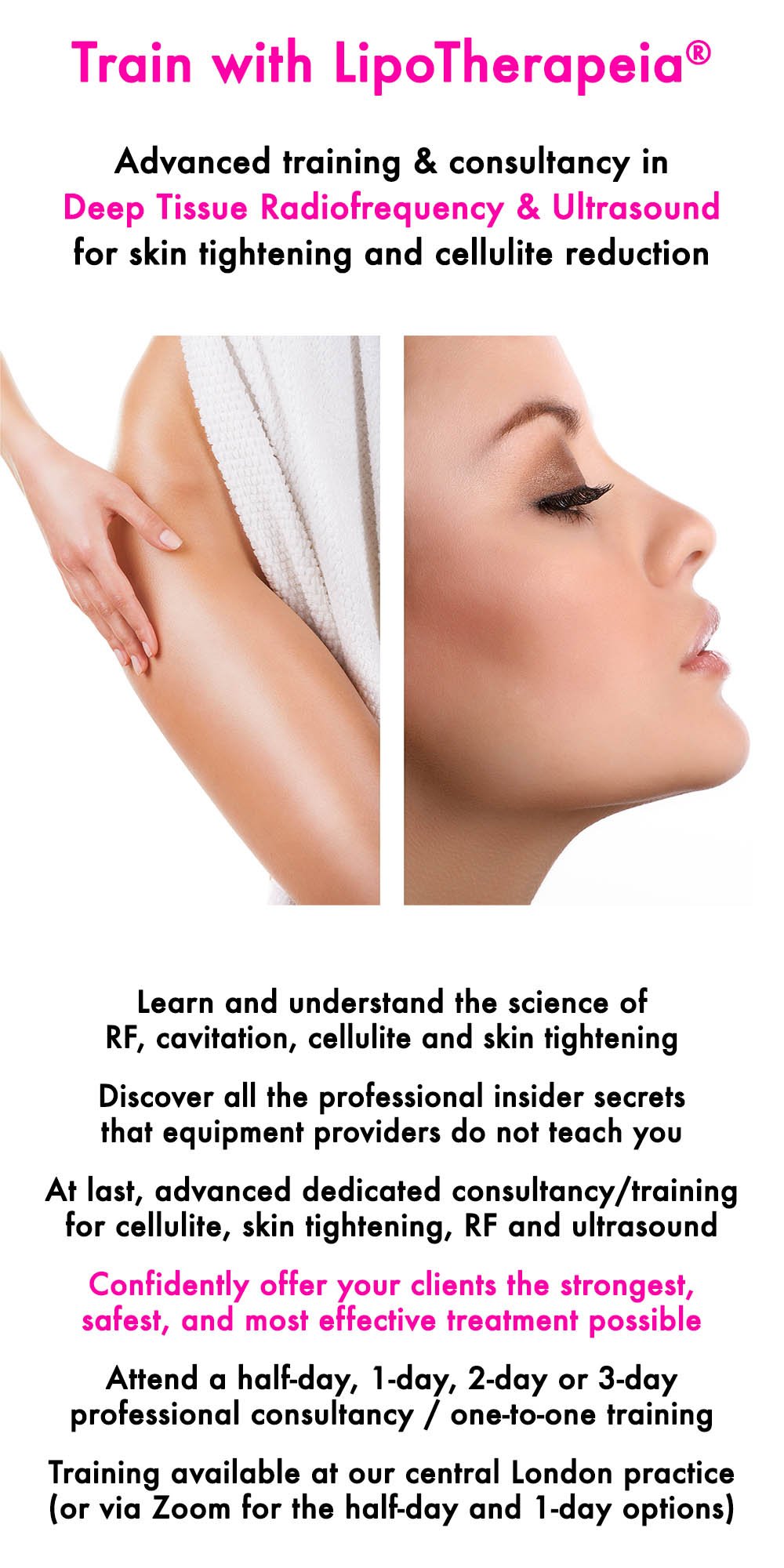Frying, toasting, high-temperature grilling, charring, smoking and burning of food all lead to disease, skin ageing and cellulite
We are pleased to share our experience in cellulite and skin tightening, from our clinic in London with everyone in the world. Check all our articles here. And if you do live in London, book an assessment, consultation or treatment with us here.
Advanced Glycation End products (AGE) from high temperature cooking cause ageing and cellulite
Senescence, whole body aging, skin ageing and cellulite
Charring and smoking of food and cellulite
Senolytic food ingredients, supplements and skincare ingredients
Fisetin is found in:
Quercetin is found in:
EGCG is found in:
Curcumin is found in:
Glyoxal induces senescence in human keratinocytes through oxidative stress and activation of the AKT/FOXO3a/p27 KIP1 pathway
Check our professional consultancy for a masterclass in radiofrequency, ultrasound cavitation, cellulite and skin tightening
Advanced Glycation End products (AGE), whole body aging, skin aging and cellulite
It is now well known to science (thousands of research papers) that cigarette smoking, food smoking and high temperature cooking of carbohydrates and fats, all lead to the creation of various chemicals detrimental to health, two of them being glyoxal and methylglyoxal (MGO).
These chemicals eventually lead to the creation of Advanced Glycation End-products (AGE), which are proven to cause whole body ageing, skin ageing and cellulite.
Senescence, whole body aging, skin ageing and cellulite
However, glyoxal/MGO on their own are also detrimental to health and appearance - not just because they cause AGE formation.
This new study below shows that glyoxal and methylglyoxal cause senescence on epidermal skin cells (keratinocytes), regardless of glycation and formation of AGEs.
Senescence itself is a major cause of whole body aging and skin ageing. It is basically the transformation of healthy cells into permanently aged ones that literally spread inflammation throughout the body.
Senescence is known to affect adipose tissue, causing dysfunction and inflammation. It wouldn’t be a wild guess to state that senescence is a major cause of cellulite.
Anti-senescent / senolytic natural molecules (see below) may be able to halt this progression, but healthy eating will actually prevent it from happening in the first place:
Avoid smoking and frying, toasting, high-temperature grilling, charring and smoking of food
Avoid excessive sugar/carb consumption
Charring and smoking of food and cellulite
Charring and smoking food specifically is very trendy these days, e.g. charred pork fat, charred cabbage, charred cauliflower to resemble a “steak”, smoked barbecuing etc.
Quite often you see on instagram steaks first being fried to “seal them”, then charred and smoked in a closed BBQ smoker and then fried with butter. Is there ANYTHING more unhealthy in this world?
Those “chefs” that promote burning the food should know better. These cooking methods cause not just cancer and cardiovascular disease (something which everyone knows these days), but also senescence and glycation, leading to whole body ageing, skin ageing and, yes, cellulite.
Chefs, especially famous chefs, have a responsibility to provide and promote nutritious food, not horrible junk to their customers. And heat-damaged food easily qualifies as nutritional junk.
Senolytic food ingredients, supplements and skincare ingredients
The most effective known senolytic (anti-senescent) natural molecules are, in order of importance:
Fisetin
Quercetin
EGCG
Curcumin
Fisetin is found in:
Small amounts in foods (berries)
Small to sufficient amounts in supplements
Tiny (=useless) amounts in a very small number of skincare products
Quercetin is found in:
Decent amounts in foods (red onions, buckwheat, citrus and berry fruits)
Medium to high amounts in supplements
Tiny amounts in a small number of skincare products, as it is too orange to be included in meaningful amounts in skincare
EGCG is found in:
In high amounts in any type of green tea (any kind, no need for overpriced matcha)
Medium to high amounts in supplements
Meaningful amounts in a very small number of skincare products
Curcumin is found in:
Good amounts in turmeric
Medium to high amounts in supplements
Meaningful amounts in a very small number of skincare products
Glyoxal induces senescence in human keratinocytes through oxidative stress and activation of the AKT/FOXO3a/p27 KIP1 pathway
Research paper link: https://pubmed.ncbi.nlm.nih.gov/34971698
Abstract: Glyoxal induces senescence in human keratinocytes through oxidative stress and activation of the Senescence is a well-characterized cellular state associated with specific markers such as permanent cell proliferation arrest, and the secretion of messenger molecules by cells expressing the Senescence-Associated Secretory Phenotype (SASP). The SASP composition depends on many factors such as the cell type or the nature of the stress that induces senescence. Since the skin constitutes a barrier with the external environment, it is particularly subjected to different types of stresses, and consequently prone to premature cellular aging. The dicarbonyl compounds glyoxal and methylglyoxal are precursors of Advanced Glycation End-products (AGEs), whose presence marks normal and pathological aging. In this study, we demonstrate that glyoxal treatment provokes oxidative stress by increasing reactive oxygen species and AGEs levels and induces senescence in human keratinocytes. Furthermore, glyoxal-induced senescence bears a unique molecular progression profile: an "early-stage" when AKT-FOXO3a-p27KIP1 pathway mediates cell-cycle arrest, and a "late-stage" senescence maintained by the p16INK4/pRb pathway. Moreover, we characterized the resulting secretory phenotype during early senescence by mass spectrometry. Our study provides evidence that glyoxal can affect keratinocyte functions and act as a driver of human skin aging. Hence, senotherapeutics aimed at modulating glyoxal-associated senescence phenotype hold promising potential.
Check our professional consultancy for a masterclass in radiofrequency, ultrasound cavitation, cellulite and skin tightening
Do you want to deeply understand radiofrequency, ultrasound cavitation, cellulite and skin tightening? Attend a half-day, 1-day, 2-day or 3-day professional consultancy / one-to-one training and confidently offer your clients the safest, strongest and most effective treatment possible. Service available via Zoom or at our central London practice.



